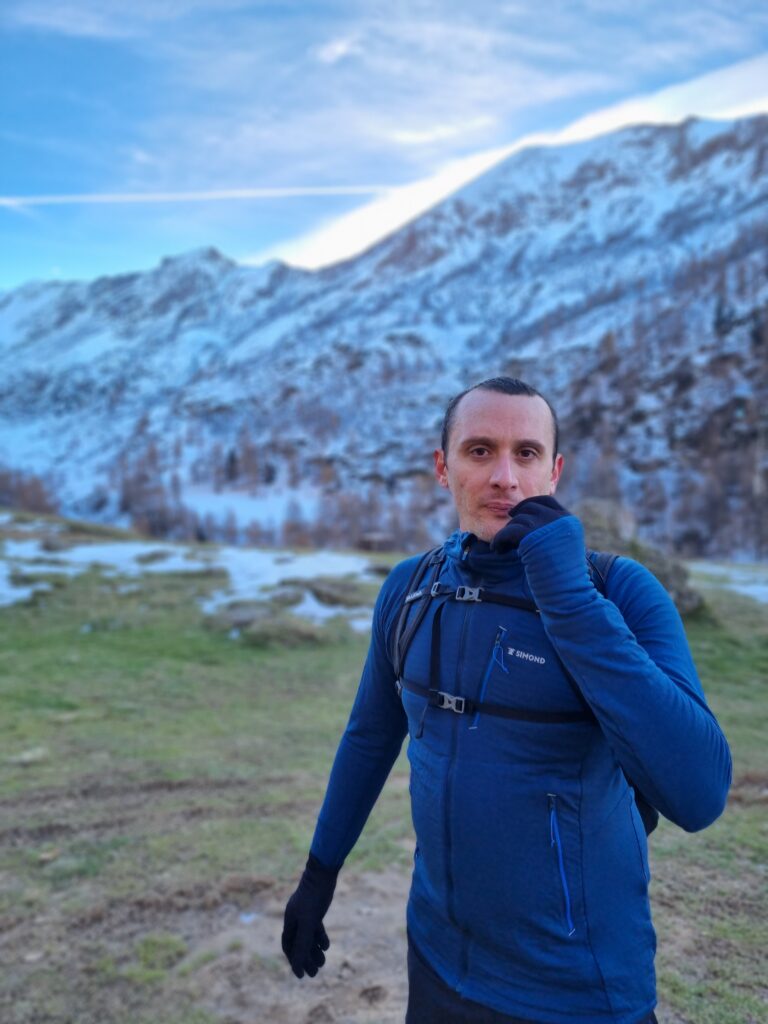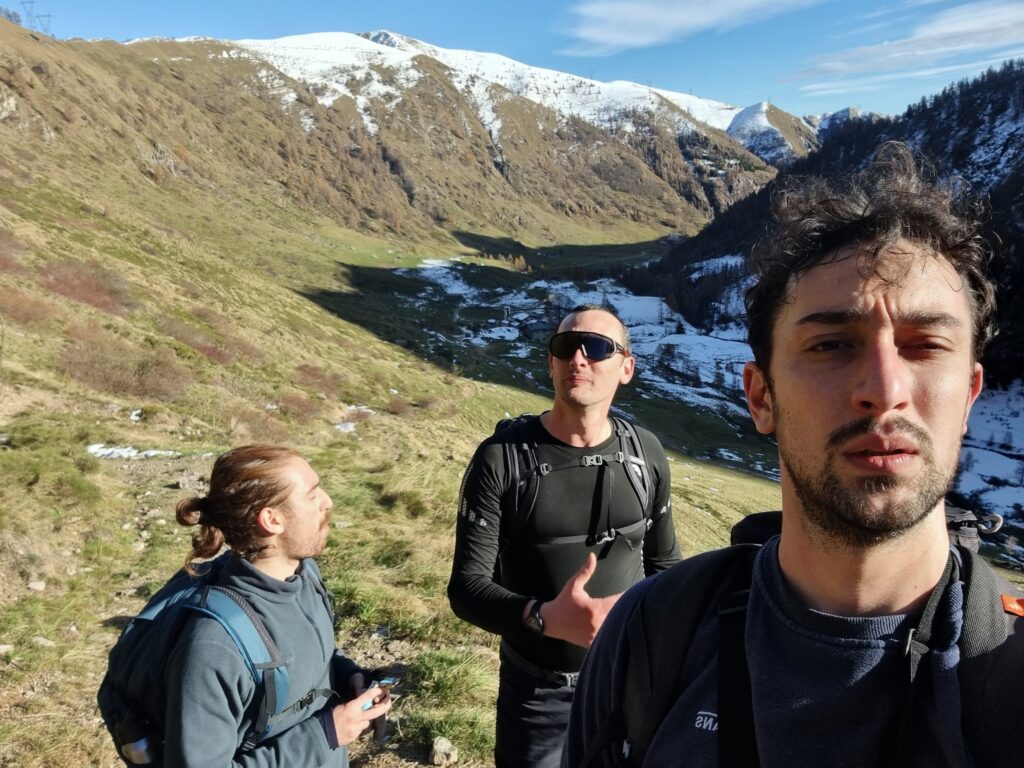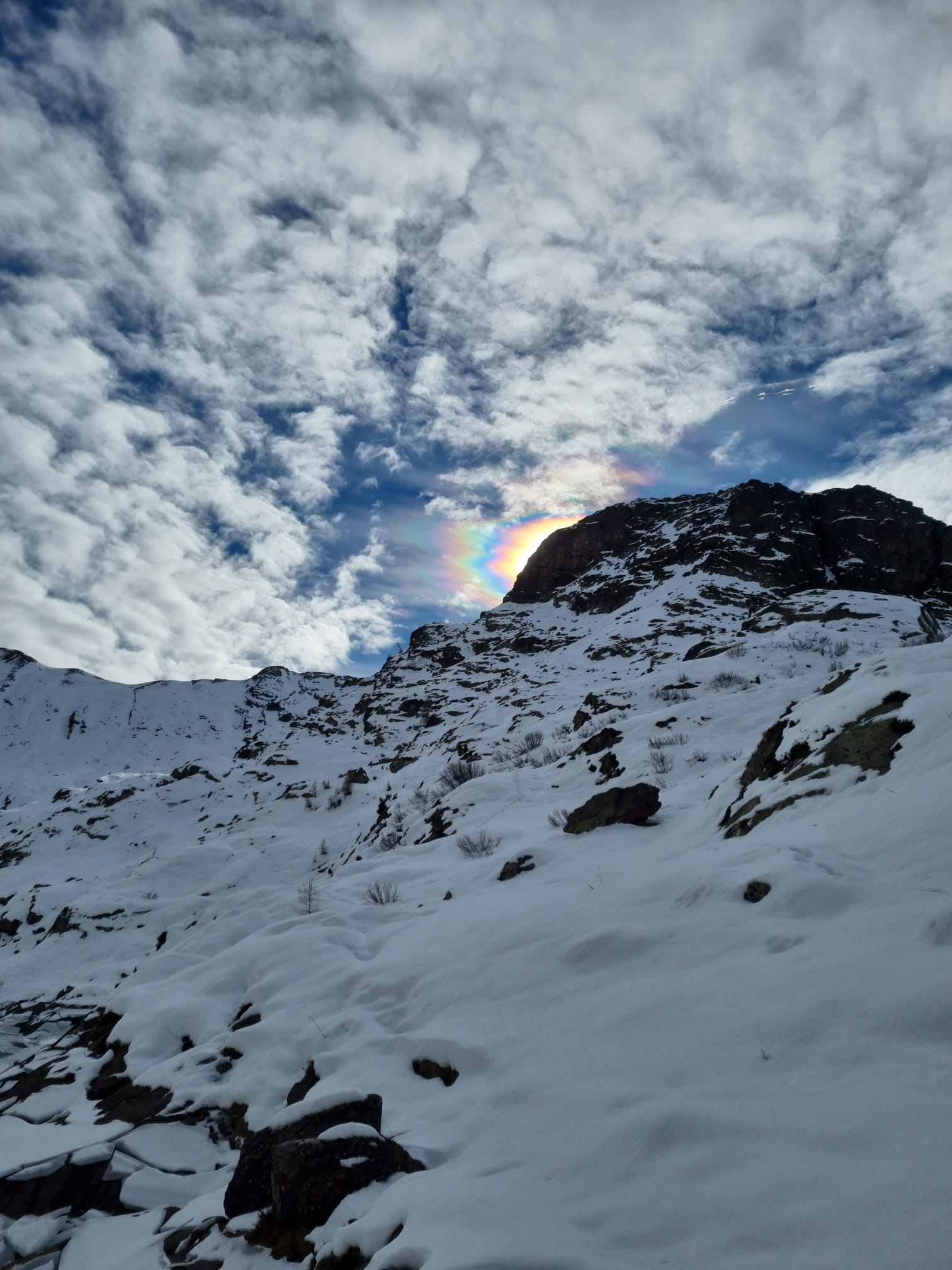It may sound repetitive, but after just one week, I retraced my steps along the same path leading to Lake Sasso. However, in this instance, the slightly melted snow made the trail from the Madonna della Neve refuge to the Santa Rita Refuge accessible. From there, one can enjoy a breathtaking view of the entire valley and subsequently descend directly to Lake Sasso before returning to the base. I took advantage of the company of young companions to revisit this trail, covering the section we couldn’t explore the previous time due to snow. In detail, the route encounters the following mountain refuges: Valbiandino Refuge, Tavecchia Refuge, Madonna della Neve Refuge, and Santa Rita Refuge.
A remarkable moment occurred when, just as we were admiring the view of Lake Sasso, a tear in the sky surprised us from behind. A gigantic patch opened in the sky with the colors of the rainbow but in a unique shape, at least in my experience.
It’s worth noting that the trail is a partisan path, allowing one to retrace some stages of the 55th Rosselli Brigade: “In this valley, on this road, they fought and fell so that Italy could be free, democratic, and united in social progress.”

The 55th Garibaldi Brigade “Fratelli Rosselli” was a partisan brigade officially established on September 2, 1944, and operated in the Valsassina region (Val Biandino, Val Gerola, Legnone) and the Lower Valtellina. The partisan brigade was part of the 2nd Garibaldi Assault Division Lombardia, along with two other partisan formations: the 86th Issel Brigade and the 89th Poletti Brigade.
The brigade conducted various actions against fascist strongholds in the area, including attacks on the barracks in Ballabio and Colico, almost transforming Valsassina into a liberated zone. The Nazi-fascists did not tolerate this situation, and in early October, they launched a major sweep operation with the intention of destroying, burning shelters and mountain pastures, and instilling terror to break the solidarity between the partisan formations and the population.
Facing difficulties and to avoid encirclement, the brigade initiated a disengagement maneuver that led them to traverse various valleys: Val Biandino, Val Gerola, Piana di Morbegno, Val dei Ratti, and finally Val Codera. Here, the situation became dire as the brigade found itself without provisions in the midst of winter, while fascist vanguards closed in. Other formations also gathered in Val Codera. The partisan commands, along with their men, decided to leave Italy and cross into Switzerland through the Teggiola Pass (2490 m). The partisans departed on the evening of November 30, 1944, facing adverse weather conditions—Val Codera and the Teggiola Pass were snow-covered. The brigade reached Bondo, the first Swiss town after the pass, starting at 7 in the morning on December 1. The retreat, which began on October 10, 1944, in Val Biandino, concluded on December 1, 1944, in Bondo, Switzerland.
Subsequently, the partisans were interned in Swiss prisoner-of-war camps. Some managed to escape and return to Italy to rebuild the brigade and continue the liberation war.
In 1945, the brigade, along with other formations, reoccupied Valsassina and entered Lecco on April 27.
About the trail
The route is quite gentle, with an elevation gain of almost 1,400 meters over a 10 km hike each way. The highest part, at the foot of the Santa Rita Refuge, still had a lot of snow and ice, so it’s crucial to bring crampons or small crampons.
Some pics




